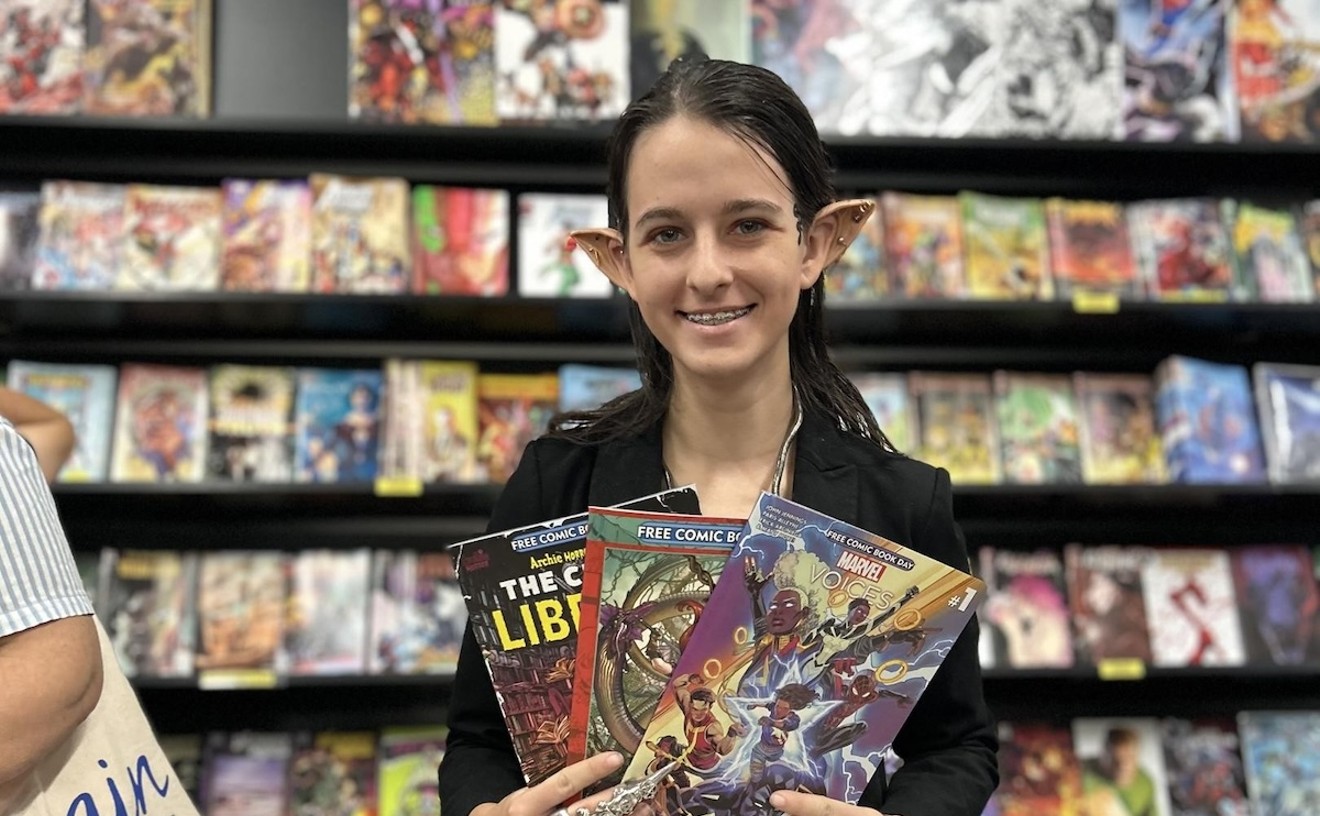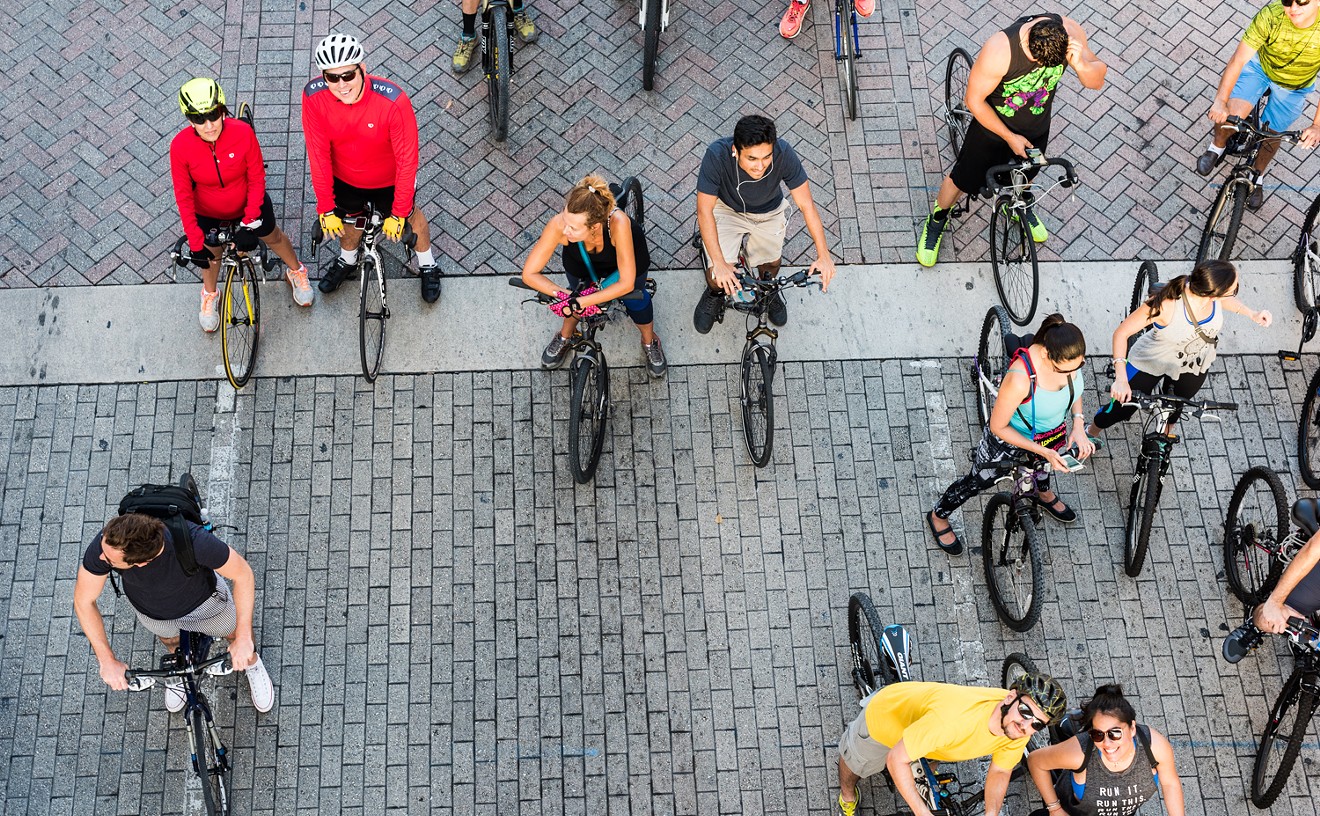The Dallas-based venture recently opened its fresh-hatched Wynwood digs with the muscular work of Argentine conceptualists Leon Ferrari and Oscar Bony in the capacious main space. Several knockout multimedia pieces by California's Tracey Snelling are situated in the rear of the gallery.
Perfumed by the scent of fresh paint and sparkling floors, Pan American's gorgeous 4500-square-foot space was impeccably tricked out for its recent inaugural and drew audible gasps from local artists, one of whom asked a gallery attendant for a diagram of the exhibition area and whether she was accepting proposals.
Pan American's Miami director, Janda Wetherington, explains that the gallery's Dallas space opened in 1994 and has had a presence here during the Art Miami and Arte Americas fairs in recent years. But Basel was the catalyst for a permanent space in Wynwood.
"Basel was a big factor, but we also represent important artists of the Cuban vanguardia generation in our Dallas gallery, and almost 75 percent of our client base was located in Miami. What Basel has done is open local collectors' eyes to broader trends in contemporary art. And since Dallas is still a traditional market that doesn't quite get what's happening in Latin America, and we work with many of these artists, it was a matter of timing and the right place for us to do it now," Wetherington says.
Even though Ferrari and Bony are considered iconic figures in Latin American art and in the international conceptualist movement, their work is rarely exhibited in the United States.
"To my knowledge this marks the first time their work has ever been shown together on this scale here," Wetherington affirms.
Despite markedly different styles, both artists began their careers at a time when Argentina was ruled by a military dictatorship and censorship was prevalent. Their work is strongly informed by political activism. Near the entrance, Bony's El Triunfo de la Muerte (The Triumph of Death) V-VII is a powerful polyptych that delivers an uppercut. The series of six large black-and-white photographs depicts the business-suit-clad artist jerking, in midair, like a rag doll that has been cut down by a firing squad. Each of the pictures shows Bony in a different pose. In one he looks like he is doing jumping jacks. In another he appears to be delivering a karate kick. These pictures are mounted under glass that has been riddled with 9mm bullet holes.
Bony began the series, called Executions and Suicides, in 1994, drawing on newspaper accounts of killings and suicides for inspiration.
In Kriminal, a dramatic color photo suggesting anyone can be the victim of violence, the artist stares wide-eyed as he lies on his back with his head resting near the bottom of stairs leading to an apartment door. One of Bony's arms is angled awkwardly toward the spectator, his hand held palm up as though supplicating for mercy.
One of the spookiest works on display is a black-and-white photo of the New York City skyline featuring the Statue of Liberty in the left foreground and the Twin Towers in the center. Bony snapped the shot in 1996 and later fired bullet holes into the towers. He then incorporated the piece into a diptych, adding a TV image of a hijacked plane crashing into one of the towers on 9/11. Titled Fair Is Foul and Foul Is Fair, a phrase lifted from Macbeth, it is the artist's last piece, created literally on his deathbed. Bony succumbed to intestinal disease in late 2001.
The gallery is exhibiting many of Ferrari's ink-on-paper and mixed-media-on-canvas works, which are densely covered in spidery text that seems to have been applied by a jerky, obsessive-compulsive hand.
Although these untitled calligraphic works appear to share a kindred spirit with Cy Twombly's abstract scrawls or Henri Michaux's mescaline-inspired doodles, they seem almost performative in nature. It's as if Ferrari wanted to wear his fingers to a stump in a protest against censorship. These striking abstract works are meticulously executed, at times meditative and beautiful to behold.
Pan American is also displaying several of Ferrari's wire sculptures, including a large sphere that dangles from the ceiling and resembles a ball of steel wool. His funky birdcage near the gallery's entrance is stuffed with feathers and toy planes.
Perhaps his most provocative works are the religion-inspired pieces that landed the artist in hot water with the Vatican a few years ago.
Ferrari's 2001 exhibit in Spain, which addressed the Catholic Church and torture, was met with protesters throwing paint at visitors, and riot police tear-gassing the crowds. A 2004 exhibit in his native Argentina mining the same subject matter was forced by court order to close, but it reopened after demonstrators knuckled the government into lifting the ban.
Looking at Ferrari's hilarious sculptures from his Ideas for Hell series, one can't help wondering what the fundamentalist squawk was about. It seems time for some sanctimonious blowhards to swap their communion wafers for Prozac.
One savory piece features the Virgin Mary, Joseph, and baby Jesus, along with a smattering of saints, getting fricasseed in a frying pan. In another gut-busting work, holy martyrs are symbolically nuked in a toy oven.
Espectaculo, Spanish for "spectacle" but also a double entendre meaning "sensational ass," is Ferrari's version of Christ and the Apostles making a booty call. The diorama features a small, brightly colored ceramic version of the Last Supper, in which the church fathers are gazing at a black-and-white photo of a fetching brunet lifting her skirts and flashing a voluptuous tush.
In Pan Am's Video Box, Tracey Snelling's installation Mirador has a swagger all its own. Two short videos are projected onto a wall in a continuous loop and feature random snippets of classic film noir.
Seda, Sangre y Sol — a miniature billboard piece made of wood, inkjet prints, a DVD player, and screen — pummels the skull. Fashioned with painstaking attention to detail, the painted diorama depicts a lurid scene straight from a dime-store pulp magazine. On the billboard, a couple locks lips, a blond rests her head on a shirtless mook's lap, and a hussy in a nightgown, her eyes garishly highlighted with tiny red bulbs, seem to leap out at the spectator.
Next to it is a shoebox version of a rundown hotel, the type often dotting desolate roads in America's boondocks. In its windows, matchbox-size LCD screens show some of the torrid romances and abject emptiness unfolding among tenants of the seedy hole. The work evokes a sense of Rear Window, in which a wheelchair-bound James Stewart peeps in on his neighbors through a pair of binoculars.
Broken Mirador offers a closeup of one of the rooms inside the hotel. In this piece, Snelling peels away a wall to show a made-up bed, a small night table and lamp, and a view of the desert outside the room's window. On the dresser, a TV set plays a video of a sordid Lothario putting the moves on an unwilling woman, while romantic music wafts in the background.
Snelling's voyeuristic work exudes a surreal vibe dripping with poignant haplessness. It plays with the viewer's desire to engage in the emotional mix of the strangers they are intruding upon, as if challenging one not to find seduction in people or things that are broken.










